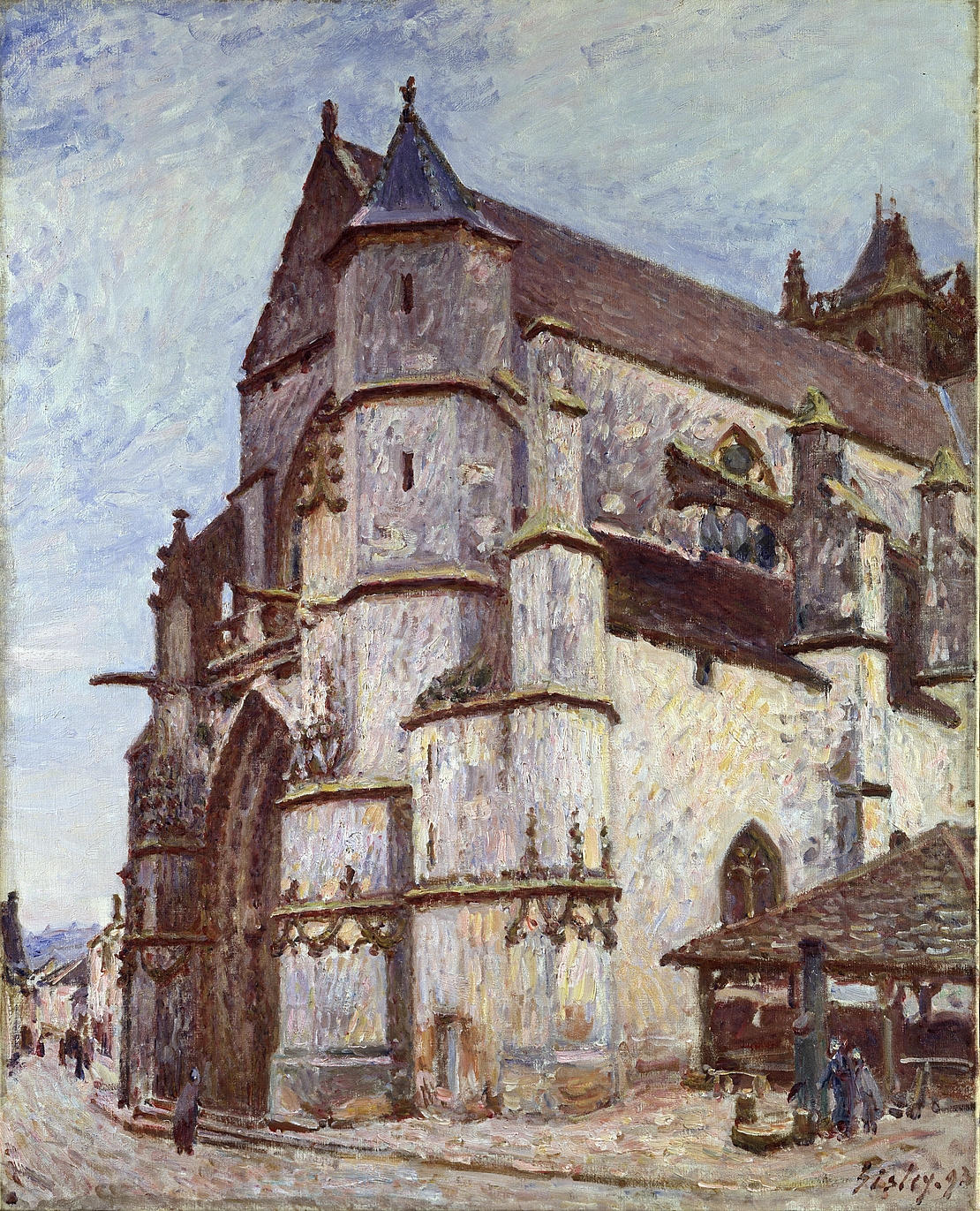
What is the color of stone? Perfectly normal stone, of the kind that churches have long been built from? We tend to think of it as somewhere between predominantly gray and beige. Regardless of where it may fall on this spectrum, the color value is not spectacular, and is of a remarkable modesty. However striking the building made possible by the stone may be and however preeminent in its architectural and historic significance, the stone itself remains in the background, conspicuous by its inconspicuousness.
What is the color of the stone of the Moret church in Alfred Sisley’s painting? While a light, violet shimmer predominates, even our first glance unfolds virtually the whole color spectrum. Warm and cold color values, primary and secondary colors, “pure” and “muddied” colors, light and dark, loud and quiet, lively and muted: Alfred Sisley describes a subtle arc that not only traverses the entire cycle of colors, but also places before our eyes an entirely different spectrum of energy. However, what the artist expresses here, in this picture created a number of years before his death, is not a loud and spectacular celebration of color, but rather a sense of quiet wonder. He allows virtually all the colors of the rainbow to glimmer softly on the church’s façade, making it the carrier for a finely woven and multifarious act of expression.
This multifarious play of color is caused by natural light, whose movements on the stone of the location Alfred Sisley has read with exceptional attentiveness and transformed within his picture. The artist created no less than twelve versions of this subject, all from the same vantage point, always seeking the indefinable changeability of the light as it is revealed in the variety of the colors on the church stones. However, the color and light also consume the solidity and tectonic qualities of the architecture; here and there, they dissolve the clear structures. Supported by visible brushstrokes, a certain spatial and representational soft focus emerges, providing significant support to the continual gentle flickering of the colors. The church remains a church, but it becomes a projection surface for light and movement — like the typical Impressionist motifs. At the same time, the advanced dissolution of the material references the transcendental properties of Gothic churches, in which light plays such a central role.
Markus Stegmann in: «Herzkammer», Museum Langmatt 2020